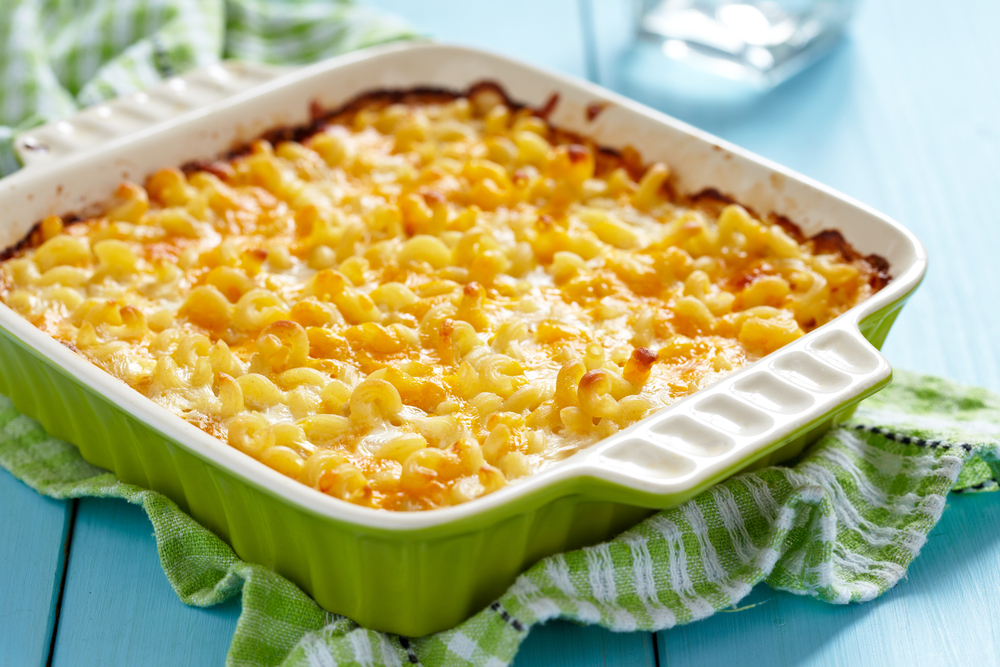Can you freeze scrambled eggs and sausage? This is a common question for those who like to meal prep or have leftovers from breakfast. Freezing scrambled eggs and sausage is a great way to save time and reduce food waste.
However, it’s important to understand the basics of freezing and preparation before freezing to ensure the quality and texture of the food after thawing and reheating.

Understanding the basics of freezing is crucial when it comes to freezing scrambled eggs and sausage. Freezing can change the texture and taste of food, and it’s important to know how to properly prepare and store food to maintain its quality.
When it comes to scrambled eggs and sausage, it’s important to cook them thoroughly before freezing, as partially cooked eggs and sausage can lead to foodborne illness.
Additionally, it’s important to consider the type of container used for freezing, as some materials may not be suitable for freezing.
Key Takeaways
- Proper preparation and storage are crucial when it comes to freezing scrambled eggs and sausage.
- Thoroughly cook the eggs and sausage before freezing to ensure food safety.
- Consider the type of container used for freezing to maintain the quality of the food after thawing and reheating.
Understanding the Basics of Freezing
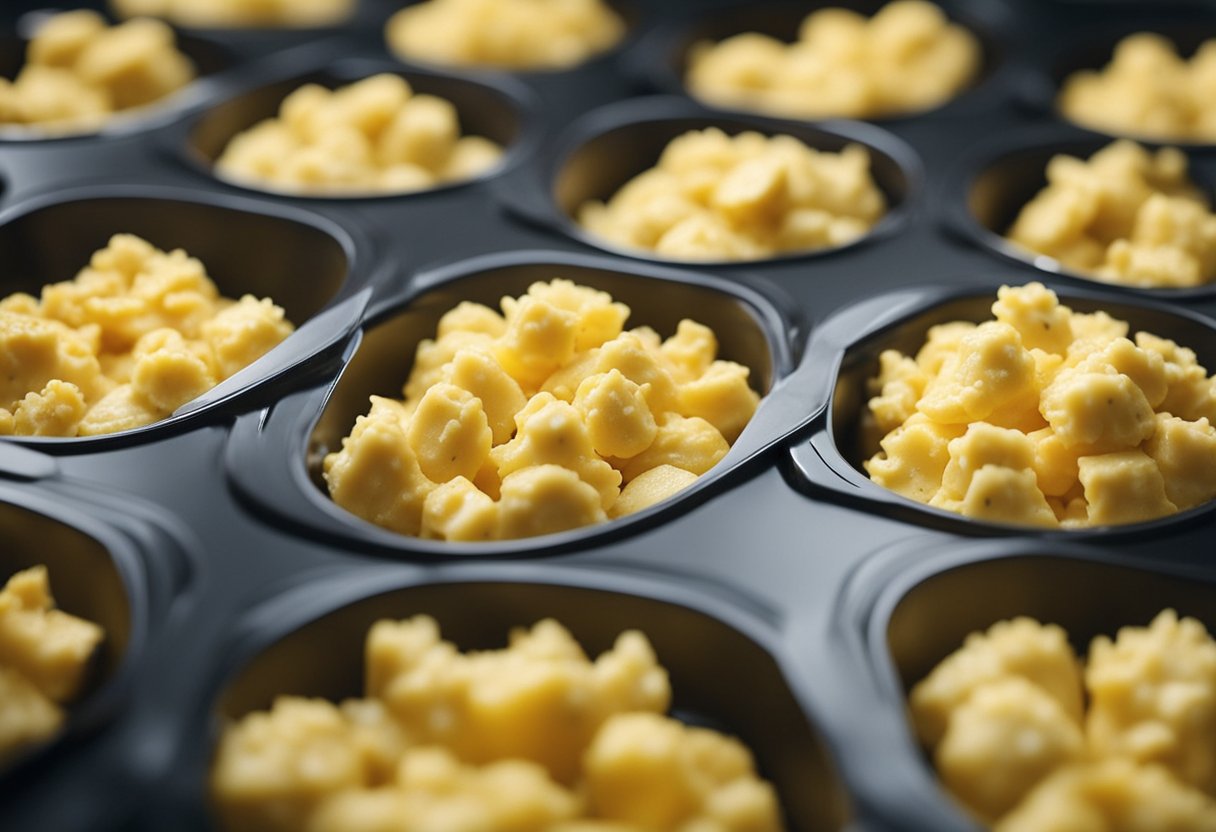
As someone who loves to meal prep, I am always looking for ways to save time in the kitchen. Freezing scrambled eggs and sausage is a great way to have a quick and easy breakfast on hand.
However, before you start freezing your breakfast, it is important to understand the basics of freezing.
Freezing Basics
Freezing is a great way to preserve food for later use. When food is frozen, the low temperature slows down the growth of bacteria and other microorganisms that can cause spoilage.
Freezing also slows down chemical reactions that can cause food to break down and lose quality over time.
Freezing Scrambled Eggs and Sausage
When it comes to freezing scrambled eggs and sausage, there are a few things to keep in mind. First, it is important to cook the eggs and sausage before freezing. Raw eggs and sausage do not freeze well and can become rubbery when thawed.
Once the eggs and sausage are cooked, allow them to cool to room temperature before freezing. This will help prevent ice crystals from forming and keep the texture of the eggs and sausage intact.
When storing the eggs and sausage in the freezer, use a freezer-safe container or bag. Make sure to label the container with the date and contents to avoid confusion later on.
Freezer-Friendly Containers
Not all containers are created equal when it comes to freezing. Freezer-safe containers are designed to withstand the low temperatures of the freezer and prevent freezer burn. Look for containers that are labeled as “freezer safe” or “suitable for freezing.”
Plastic containers and bags are great for freezing scrambled eggs and sausage. Glass containers can also be used, but make sure to leave plenty of room at the top for expansion as the food freezes.
Thawing Frozen Scrambled Eggs and Sausage
When it’s time to eat your frozen scrambled eggs and sausage, it is important to thaw them properly. The best way to thaw frozen scrambled eggs and sausage is to transfer them to the refrigerator the night before you plan to eat them. This will allow them to thaw slowly and evenly.
If you are short on time, you can also thaw the eggs and sausage in the microwave. Use the defrost setting and check them every 30 seconds to prevent overheating.
In conclusion, freezing scrambled eggs and sausage is a great way to save time and have a quick and easy breakfast on hand. By understanding the basics of freezing and using freezer-friendly containers, you can ensure that your frozen eggs and sausage stay fresh and delicious.
Preparation Before Freezing

Before freezing scrambled eggs and sausage, it is important to prepare them properly to ensure that they will remain fresh and tasty when reheated. Here are some tips to follow:
Cook the Scrambled Eggs and Sausage
First, cook the scrambled eggs and sausage as you normally would. You can add salt, pepper, cheese, bacon, onions, mushrooms, potatoes, or any other ingredients that you like. Make sure that the eggs are fully cooked and the sausage is browned.
Let the Scrambled Eggs and Sausage Cool
Once the scrambled eggs and sausage are cooked, let them cool to room temperature. This will prevent condensation from forming inside the container when you freeze them.
Portion the Scrambled Eggs and Sausage
Next, portion the scrambled eggs and sausage into individual servings. You can use a measuring cup or a kitchen scale to ensure that each serving is the same size. This will make it easier to reheat them later.
Use Freezer-Safe Containers
When freezing scrambled eggs and sausage, it is important to use freezer-safe containers. You can use plastic containers or freezer bags, but make sure that they are airtight to prevent freezer burn.
Label and Date the Containers
Before placing the containers in the freezer, label them with the contents and the date. This will make it easier to identify them later and ensure that you use them before they expire.
By following these simple steps, you can freeze scrambled eggs and sausage to enjoy later. Whether you are meal prepping or saving leftovers, freezing scrambled eggs and sausage is a great way to reduce waste and save time in the kitchen.
Freezing Process
Freezing scrambled eggs and sausage is a simple process that can be done in just a few steps. Here’s how:
- Cook the scrambled eggs and sausage as you normally would.
- Allow the mixture to cool completely before freezing.
- Portion the mixture into freezer-friendly containers or bags. You can use muffin tins or ice cube trays to make individual portions.
- Label the containers with the date and contents before placing them in the freezer.
- Store the containers in the freezer for up to 3 months.
When you’re ready to reheat the frozen scrambled eggs and sausage, there are a few different methods you can use. You can microwave them, reheat them on the stove, or bake them in the oven.
If you’re using the microwave, place the frozen mixture in a microwave-safe container and heat it on high for 30-second intervals until it’s heated through. Stir the mixture after each interval to ensure even heating.
If you’re reheating the mixture on the stove, place it in a skillet over medium heat and stir occasionally until it’s heated through.
To bake the frozen mixture, preheat your oven to 350°F. Place the frozen mixture in a baking dish and bake for 20-25 minutes or until it’s heated through.
Overall, freezing scrambled eggs and sausage is a great way to save time and make meal prep easier. Just make sure to follow the proper freezing process and use freezer-friendly containers to ensure the best results.
Storing Scrambled Eggs and Sausage
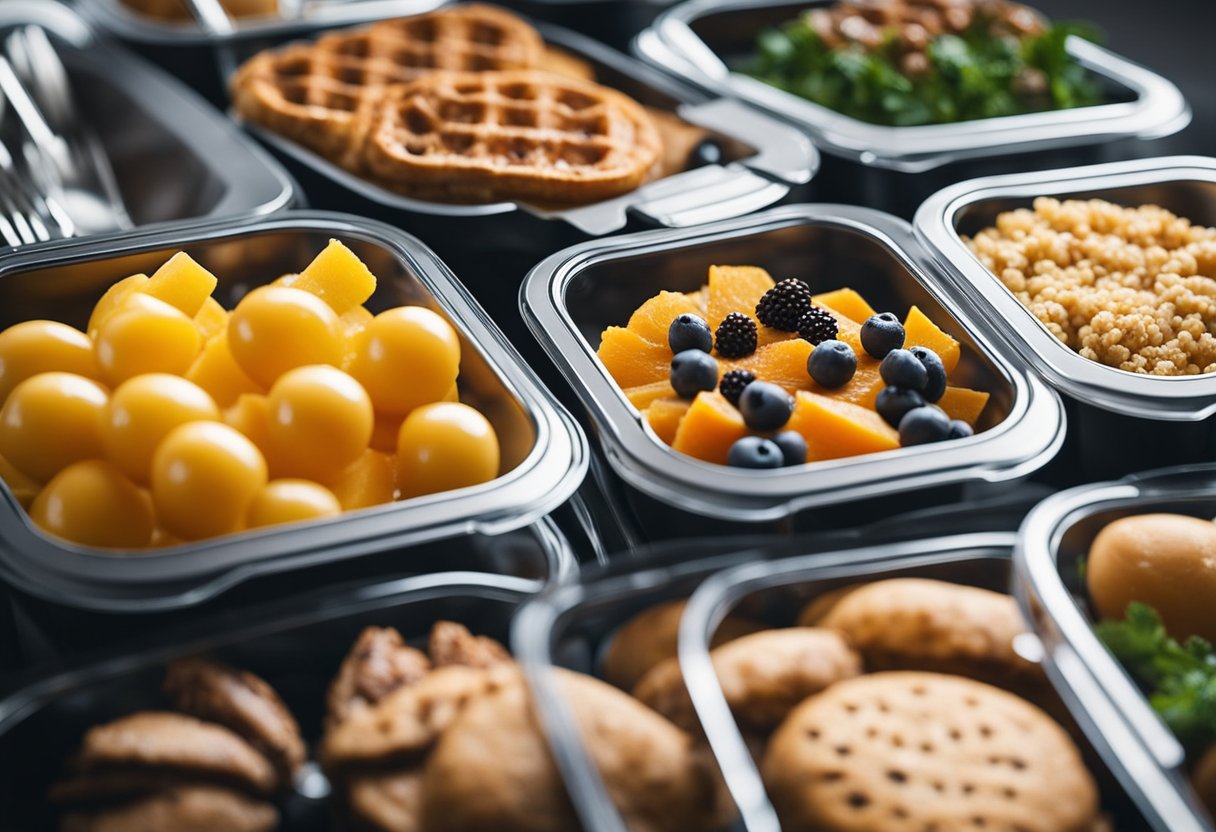
As a meal prep enthusiast, I always look for ways to save time and effort in the kitchen. Scrambled eggs and sausage are a great breakfast option that can be made ahead of time and stored for later use. But can you freeze scrambled eggs and sausage? The answer is yes, you can!
When it comes to storing scrambled eggs and sausage, there are a few things to keep in mind. First, it’s important to let the food cool down to room temperature before storing it.
Putting hot food in the fridge or freezer can raise the temperature of the appliance, which can be dangerous for other food items.
Once the food has cooled down, you can store it in the fridge or freezer. If you’re planning to eat the food within a few days, storing it in the fridge is the way to go. Scrambled eggs and sausage can be stored in an airtight container in the fridge for up to four days.
If you’re planning to store the food for a longer period, the freezer is your best bet. Scrambled eggs and sausage can be frozen for up to two months in a freezer-safe container. Make sure to label the container with the date so you know when it was stored.
When it comes to reheating frozen scrambled eggs and sausage, it’s important to do it properly to prevent the food from becoming rubbery or dry.
The best way to reheat frozen scrambled eggs and sausage is to thaw it overnight in the fridge and then reheat it in a skillet on medium heat.
You can also reheat it in the microwave, but be sure to stir the food every 30 seconds to prevent it from getting overcooked.
In summary, scrambled eggs and sausage can be stored in the fridge for up to four days and in the freezer for up to two months.
Make sure to let the food cool down before storing it and label the container with the date. When reheating frozen scrambled eggs and sausage, thaw it overnight in the fridge and then reheat it in a skillet or microwave.
Thawing and Reheating
Once you have frozen your scrambled eggs and sausage, it’s time to thaw and reheat them. There are a few different methods you can use for thawing and reheating, so choose the one that works best for you.
Thawing
The first step in reheating your frozen scrambled eggs and sausage is to thaw them. You can thaw them in the refrigerator, in the microwave, or at room temperature.
If you have time, the best way to thaw your eggs and sausage is in the refrigerator. Simply transfer them from the freezer to the fridge and let them thaw overnight. This method ensures that the eggs and sausage thaw evenly and stay at a safe temperature.
If you’re short on time, you can also thaw your eggs and sausage in the microwave. Place them in a microwave-safe dish and use the defrost setting to thaw them. Be sure to stir them occasionally to ensure even thawing.
Finally, you can also thaw your eggs and sausage at room temperature. Simply leave them on the counter for a few hours until they are fully thawed. However, this method is not recommended as it can lead to bacterial growth.
Reheating
Once your scrambled eggs and sausage are thawed, it’s time to reheat them. The best way to reheat your eggs and sausage is in the microwave or on the stove.
To reheat in the microwave, place your eggs and sausage in a microwave-safe dish and cover with a lid or microwave-safe plastic wrap. Heat on high for 30-60 seconds, stirring occasionally, until they are fully heated through.
To reheat on the stove, place your eggs and sausage in a non-stick skillet over medium heat. Stir occasionally until they are fully heated through.
No matter which method you choose, be sure to check that your eggs and sausage are fully heated through before eating. This will ensure that they are safe to consume and delicious to eat.
Quality and Texture After Freezing
As someone who has frozen scrambled eggs and sausage before, I can confidently say that the quality and texture of the dish can be maintained after freezing.
However, it’s important to note that the texture may not be exactly the same as fresh scrambled eggs and sausage.
Frozen scrambled eggs tend to have a slightly different texture than fresh eggs. The eggs may become slightly rubbery or watery after being frozen and then thawed.
To combat this, it’s important to not overcook the eggs before freezing them. Overcooked eggs tend to become even more rubbery after being frozen and thawed.
When it comes to freezing sausage, the texture tends to hold up better than eggs. However, it’s important to let the sausage reach room temperature before freezing it.
This helps prevent freezer burn and maintains the quality of the sausage. Portioning the sausage before freezing it can also make it easier to reheat later on.
To maintain the quality and texture of frozen scrambled eggs and sausage, it’s important to reheat them properly.
Reheating the dish in the microwave can cause the eggs to become rubbery and the sausage to become dry. Instead, try reheating the dish in a skillet with a little bit of butter or oil. This will help maintain the texture and flavor of the dish.
Overall, frozen scrambled eggs and sausage can maintain their quality and texture if they are prepared and reheated properly. While the texture may not be exactly the same as fresh eggs and sausage, with a little bit of care, frozen eggs and sausage can still be a delicious and convenient meal option.
Safety Considerations
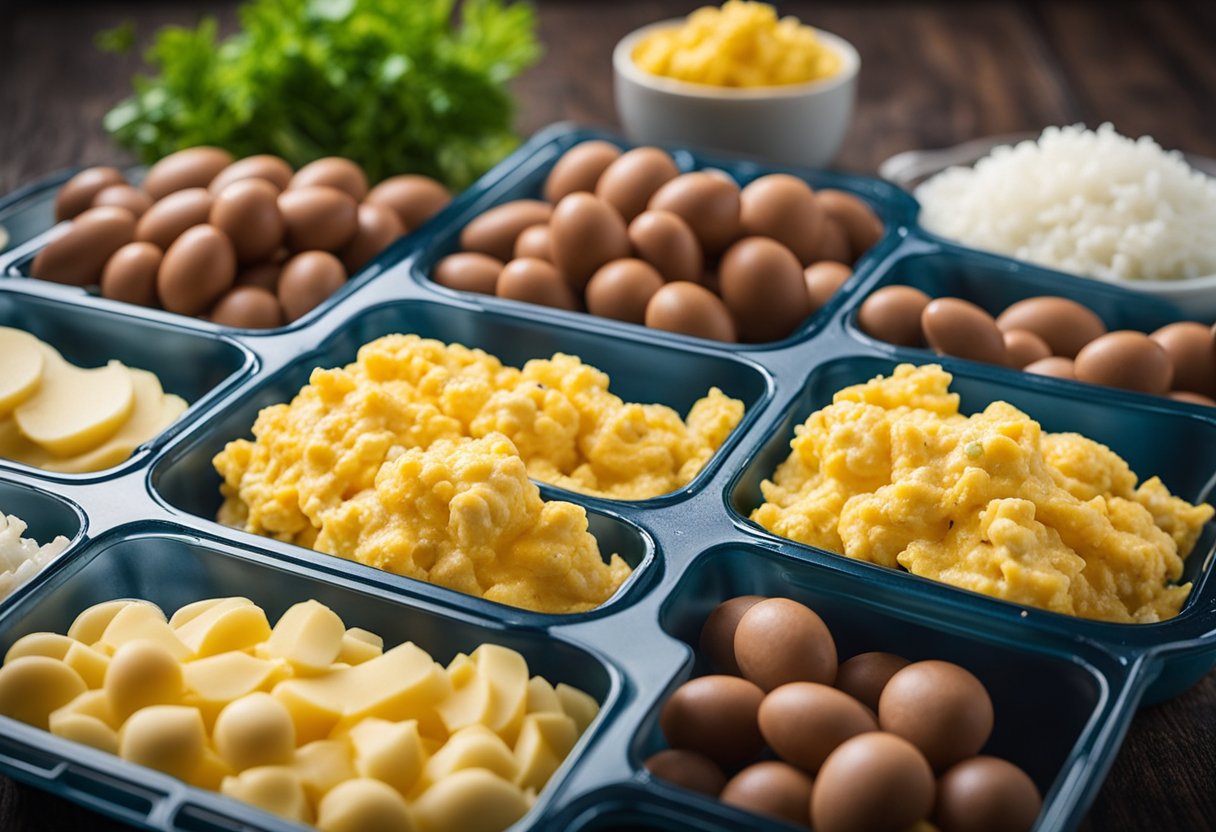
When it comes to freezing scrambled eggs and sausage, there are a few safety considerations to keep in mind. As with any food, it is important to handle it properly to prevent foodborne illness.
Here are some safety tips to follow:
- Protein: Eggs and sausage are both high in protein, which can be a breeding ground for bacteria if not handled properly. It is important to cook both the eggs and sausage thoroughly before freezing to kill any bacteria that may be present.
- Refrigerator: It is important to keep the eggs and sausage refrigerated until you are ready to cook them. Leaving them out at room temperature for too long can allow bacteria to grow, which can cause foodborne illness.
- Safety: Always use clean utensils and cookware when preparing the eggs and sausage. This will help prevent cross-contamination, which can also lead to foodborne illness.
- Freezing: When freezing scrambled eggs and sausage, it is important to do so as quickly as possible. This will help prevent the growth of bacteria and maintain the quality of the food. Be sure to use freezer-safe containers or bags to prevent freezer burn.
By following these safety considerations, you can safely freeze scrambled eggs and sausage for later use. Remember to always use proper food handling techniques to prevent foodborne illness.
Incorporating into Dishes
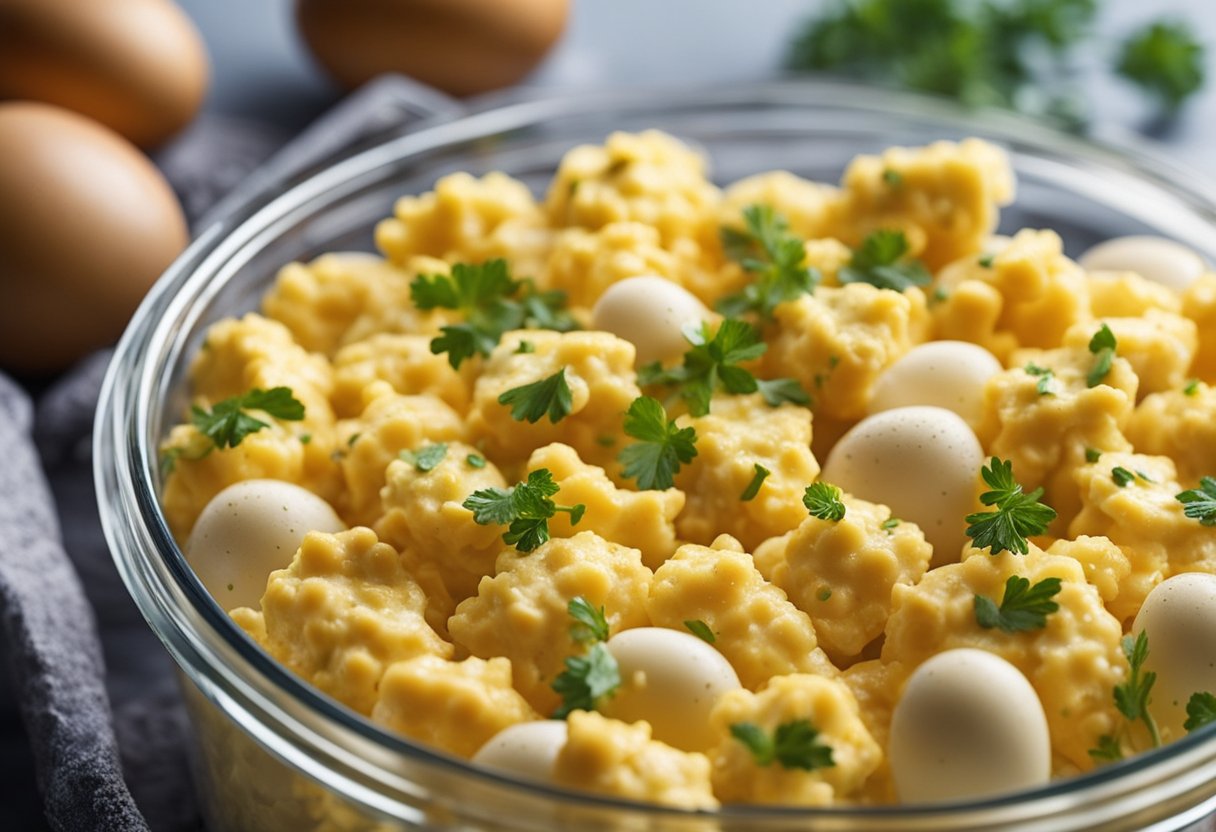
When it comes to incorporating frozen scrambled eggs and sausage into dishes, the possibilities are endless. Here are a few ideas to get you started:
Breakfast Burrito
A breakfast burrito is a quick and easy way to enjoy a delicious breakfast on the go. Simply thaw your frozen scrambled eggs and sausage, warm up a tortilla, and add your favorite toppings like cheese, avocado, and salsa. Roll it up and you’re ready to go!
Quiche
A quiche is a great way to use up leftover scrambled eggs and sausage. Simply mix the eggs and sausage with some milk and pour it into a pie crust. Bake until set and you have a delicious breakfast or brunch dish that is perfect for feeding a crowd.
Egg Casseroles
Egg casseroles are another great way to use up leftover scrambled eggs and sausage. Simply mix the eggs and sausage with some bread, cheese, and milk and bake until set. You can also add in other ingredients like vegetables or potatoes to make it even more filling.
Frittatas
A frittata is a great way to use up leftover scrambled eggs and sausage. Simply mix the eggs and sausage with some vegetables like spinach, mushrooms, or onions and bake in a cast-iron skillet until set. You can also add in some cheese for extra flavor.
Deviled Eggs
Deviled eggs are a classic appetizer that can be made with leftover scrambled eggs and sausage. Simply mix the eggs and sausage with some mayonnaise, mustard, and spices and pipe the mixture back into the egg whites. This is a great way to use up leftover hard-boiled eggs as well.
Omelets
Omelets are a quick and easy way to use up leftover scrambled eggs and sausage. Simply mix the eggs and sausage with some cheese and vegetables like peppers or onions and cook in a skillet until set. You can also add in some herbs like parsley or chives for extra flavor.
Fried Eggs and Sunny-Side-Up
Fried eggs and sunny-side-up eggs are another great way to use up leftover scrambled eggs and sausage. Simply heat up some butter in a skillet and crack the eggs into the pan.
Cook until the whites are set and the yolks are still runny. Serve with some toast and you have a delicious breakfast or brunch dish.
Overall, freezing scrambled eggs and sausage is a great way to save time and reduce food waste. With a little creativity, you can easily incorporate them into a variety of dishes for a delicious and satisfying meal.
Meal Prep and Large Batch Preparation
When it comes to meal prep and large batch preparation, scrambled eggs and sausage can be a great option. Not only is it a delicious and filling breakfast, but it can also be made ahead of time and reheated easily.
To start, I recommend using a large skillet to cook the scrambled eggs and sausage together. This will save time and make clean-up easier.
Depending on how many servings you need, you can adjust the amount of eggs and sausage accordingly. A general rule of thumb is to use about 2 eggs and 1/4 cup of cooked sausage per serving.
If you’re making a large batch, it’s important to consider prep time. You can crack all your eggs first and whisk them together in a bowl to save time. You can also cook the sausage ahead of time and store it in the fridge until you’re ready to use it.
Once you’ve cooked the scrambled eggs and sausage, you can divide them into individual servings and store them in the fridge or freezer. If you’re storing them in the fridge, they should last for up to 4 days. If you’re storing them in the freezer, they can last for up to 3 months.
When reheating, it’s important to do so safely. Make sure the scrambled eggs and sausage are heated to an internal temperature of 165°F (74°C) before consuming. You can reheat them in the microwave or on the stovetop.
Overall, scrambled eggs and sausage can be a great option for meal prep and large batch preparation. It’s filling, delicious, and can be made ahead of time for easy reheating.
Just make sure to follow food safety guidelines and adjust the recipe as needed for the number of servings you need.
Related posts:
Frequently Asked Questions

How long can scrambled eggs last in the freezer?
Scrambled eggs can last up to 6 months in the freezer if stored properly in an airtight container or freezer bag. It is recommended to consume them within 2-3 months for best quality.
Can you freeze cooked sausage?
Yes, you can freeze cooked sausage. Allow the sausage to cool down to room temperature before storing it in an airtight container or freezer bag. Cooked sausage can last up to 2 months in the freezer.
What is the best way to freeze breakfast sausages?
To freeze breakfast sausages, place them in a single layer on a baking sheet and freeze for about an hour. Once frozen, transfer them to an airtight container or freezer bag.
This method prevents the sausages from sticking together and makes it easier to portion them out.
What is the recipe for a sausage breakfast burrito that can be frozen?
To make a sausage breakfast burrito that can be frozen, cook breakfast sausage and scrambled eggs. Add shredded cheese and cooked hash browns.
Spoon the mixture onto a tortilla and roll it up. Wrap the burrito in plastic wrap or foil and freeze. When ready to eat, microwave the burrito for 1-2 minutes or until heated through.
How long can a turkey sausage breakfast bowl be stored in the freezer?
A turkey sausage breakfast bowl can last up to 3 months in the freezer if stored properly in an airtight container or freezer bag.
What are some savory breakfast bowl recipes with eggs and potatoes that can be frozen?
One recipe is a potato and egg breakfast bowl. Cook diced potatoes in a skillet until crispy. Add scrambled eggs and cook until set. Top with shredded cheese and crumbled bacon.
Let cool, then divide into individual portions and freeze. Another recipe is a sweet potato and sausage breakfast bowl. Cook sweet potato cubes and breakfast sausage in a skillet.
Add scrambled eggs and cook until set. Top with avocado and salsa. Let cool, then divide into individual portions and freeze.







